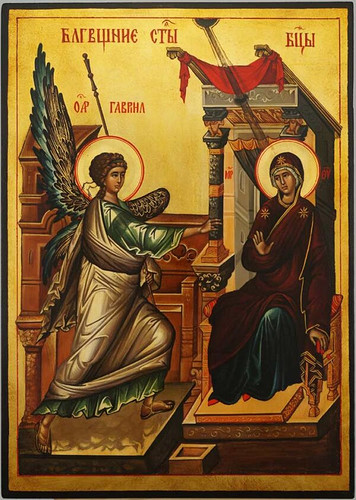The Incarnation | Advent Readings with BreakPoint
When we think about Christmas, we tend to think about the story: Mary and Joseph, the baby in the manger, angels and shepherds. We rarely go beyond that to ponder the deeper significance of what was going on that day in Bethlehem. We don’t want the ugliness of the cross to interfere with the sweetness of our celebration. Part of the reason for this is our culture’s one-dimensional, simplistic view of reality that leads us to focus so much on the story that we can forget the bigger picture.
Fortunately, C. S. Lewis showed us how to get around our era’s limitations: reading old books.
Works from other eras bring a different perspective that helps move us past our own blind spots and biases. Further, reading the great thinkers of the past illustrates the unity of the faith across traditions, what Richard Baxter called “mere Christianity.” Lewis also noted that for him, reading theological works and pondering their truths was far richer devotionally than reading devotional works.
Lewis makes these arguments in his introduction to a translation of “On the Incarnation of the Word of God,” a work by early fourth-century theologian Athanasius of Alexandria. Athanasius was an enormously important figure in church history. He was the primary theologian arguing that Jesus was God rather than a created being as argued by Arius, a rival Alexandrian theologian. “On the Incarnation” was the second of a two-part defense of Christianity written prior to the controversy with Arius which lays some of the groundwork for Athanasius’s arguments later.
Athanasius begins with the doctrine of Creation, which was the work of the Word of God. Humanity, being created in the Image of God, has “a share in the reason being of the Word Himself.” As a result, we were made for eternal life, though we were warned that disobedience would lead to death. By following the devil, we became estranged from God and the Word, the source of life. We thus became bound to death and corruption, and in our alienation from the source of existence, were destined to fall into non-existence.
This is the reason for the Incarnation. Athanasius discusses this in the familiar terms of God’s love for humanity, but rather than looking at it from the perspective of our need, he emphasizes the implications of the Fall for God himself. Our sin created a dilemma for God: it was unthinkable that God would not carry out his word and subject humanity to death, but if he did this, his purpose in Creation would have been thwarted.
To solve the dilemma, the Word became flesh. The unincarnate Word could not die, but humanity had a debt to pay to death, so the Word took on a body like our own. We die because we are corrupt from sin; the Word was sinless and uncorrupt. Thus, when he freely offered his life, he was not paying his own debt but fulfilling what we owed death. By so doing, he satisfied the demands of death and thus abolished the Law of Death on our behalf.
But the Incarnation accomplished more than simply freeing us from death. The Image of God made it possible for us to know God; with sin, the Image was defaced, and we lost the knowledge of God. But since the Word is the perfect Image of God (Col. 1:15), He was able to renew that Image in us, and by his life, works, and teaching to renew and restore true knowledge of God. His works of power revealed Him as the Word of God and thus the one through whom true knowledge of God comes.
His works also demonstrate that though incarnate as a man, he continued to be the eternal Word of God, the Lord of Creation:
“The Word was not hedged in by His body, nor did His presence in the body prevent His being present elsewhere as well. When He moved His body He did not cease also to direct the universe by His mind and might. No. The marvelous truth is, that being the Word, so far from being Himself contained by anything, He actually contained all things in Himself.”
Think about that when you contemplate the baby in the manger!
Athanasius then turns his attention to the objection that Christ should not have had to die in so public and disgraceful a way, arguing instead that crucifixion was uniquely appropriate for the death of Christ. To bear the curse laid on us by sin, he had to become a curse himself, as the Scripture says, “cursed is everyone that hangs on a tree,” (Deut. 21:23.)
Further, he died for all humanity, uniting Jews and Gentiles in one body, and so on the cross his arms were outstretched, one reaching to the Jews and the other to the Gentiles. And since Satan is the “prince of the power of the air,” in order to “purify the air and to make ‘a way’ for us up to heaven,” Jesus had to die in the air. These arguments are foreign to our ways of thinking about Jesus’ death, but they are worth pondering as elements of the early church’s understanding of Jesus’ work.
Turning to the resurrection, Athanasius offers proofs that are again very different from those apologists today offer. The essential point is that dead people have no power to do anything, yet the power of Christ and his triumph over death is evident in his followers who have no fear of death but despise it and trample on it, and in the triumph of Christ over pagan gods, evil spirits, and magic, all of which are rendered impotent by the name of Christ and the sign of the cross.
In the subsequent sections, Athanasius deals with objections from both Jews and Gentiles. To the Jews, he emphasizes fulfilled prophecy, including Dan. 9:24-25, which refers to sealing vision and prophecy and the end of the time decreed for the holy city; Athanasius saw this fulfilled with the destruction of Jerusalem in AD 70. It thus parallels the end of the rule of pagan gods and evil spirits he spoke of in connection with the resurrection.
Against the Gentiles, he again cites the triumph of Christ over their gods, oracles, evil spirits, and magicians, but also notes that as the Gospel has gone across the world, it has done what paganism had never been able to do by uniting people in the worship of one God.
Further, it turns entire peoples away from warfare, cruelty, and aggression to peace, harmony, and a desire for friendship—a phenomenon still seen today in many places in the Global South where the Gospel is growing.
Since no human could have done all this, it must have been done by and through God, proving that Jesus is the Incarnate Word of God, the creator of all things who reveals the mind of God. The effect of the Incarnation is a salvation much bigger than just forgiveness of sins:
He, indeed, assumed humanity that we might become God [i.e. partakers of the divine nature, 2 Pet. 1:4]. He manifested Himself by means of a body in order that we might perceive the Mind of the unseen Father. He endured shame from men that we might inherit immortality. He Himself was unhurt by this, for He is impassable and incorruptible; but by His own impossibility, He kept and healed the suffering men on whose account He thus endured. In short, such and so many are the Savior’s achievements that follow from His Incarnation, that to try to number them is like gazing at the open sea and trying to count the waves. One cannot see all the waves with one’s eyes, for when one tries to do so those that are following on baffle one’s senses. Even so, when one wants to take in all the achievements of Christ in the body, one cannot do so, even by reckoning them up, for the things that transcend one’s thought are always more than one thinks that one has grasped.
The Incarnation: Advent
The church’s understanding of who Christ is and what He accomplished continued to develop from Athanasius, and in some ways, his description of the union of the divine and human natures in Christ would be modified by later theological discussions. Just as we have blind spots from our era, Athanasius had his; he also did not have the benefit of the ongoing debates about Christology. Nonetheless, his work provides valuable insights that much of the church has lost.

